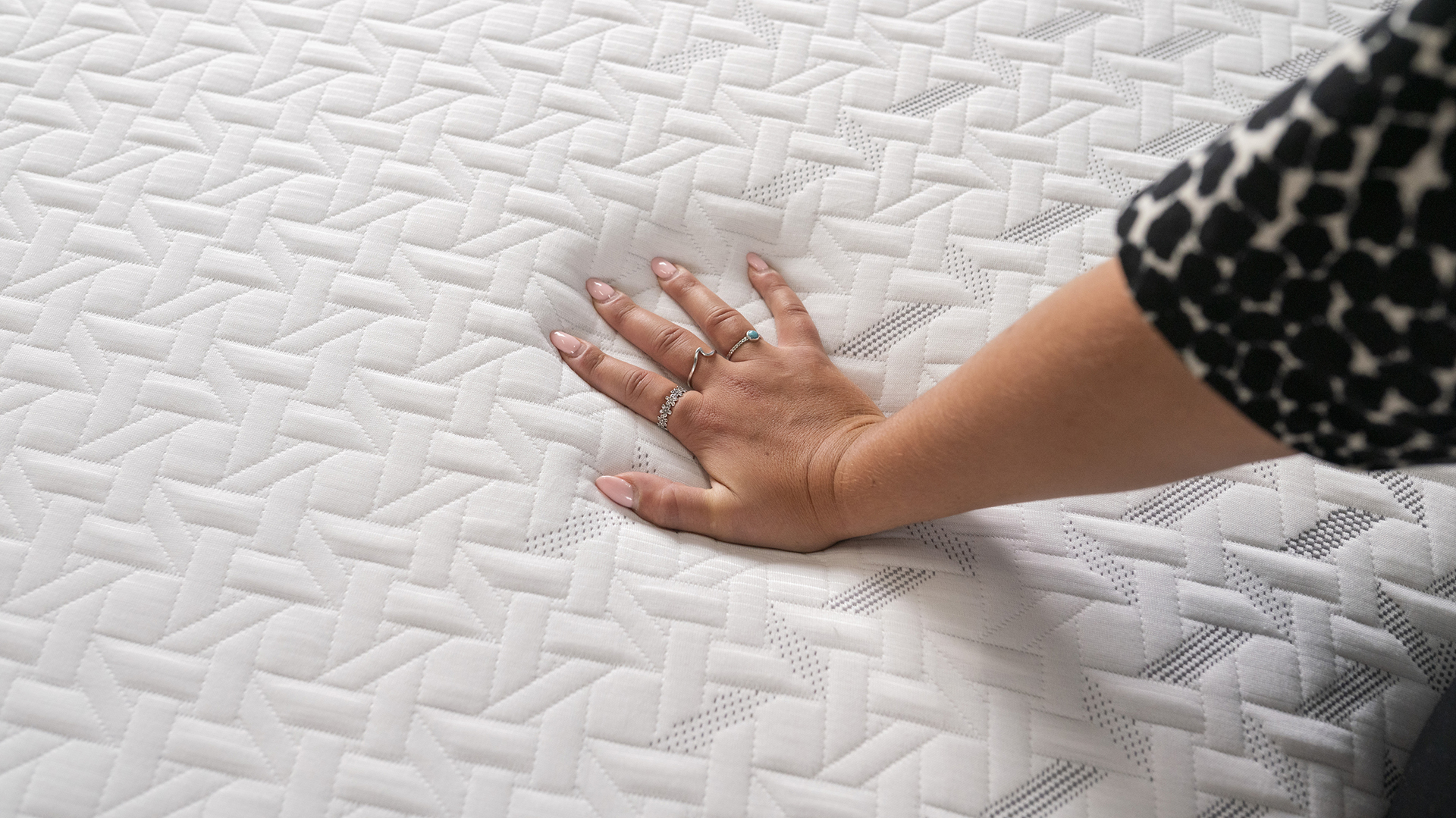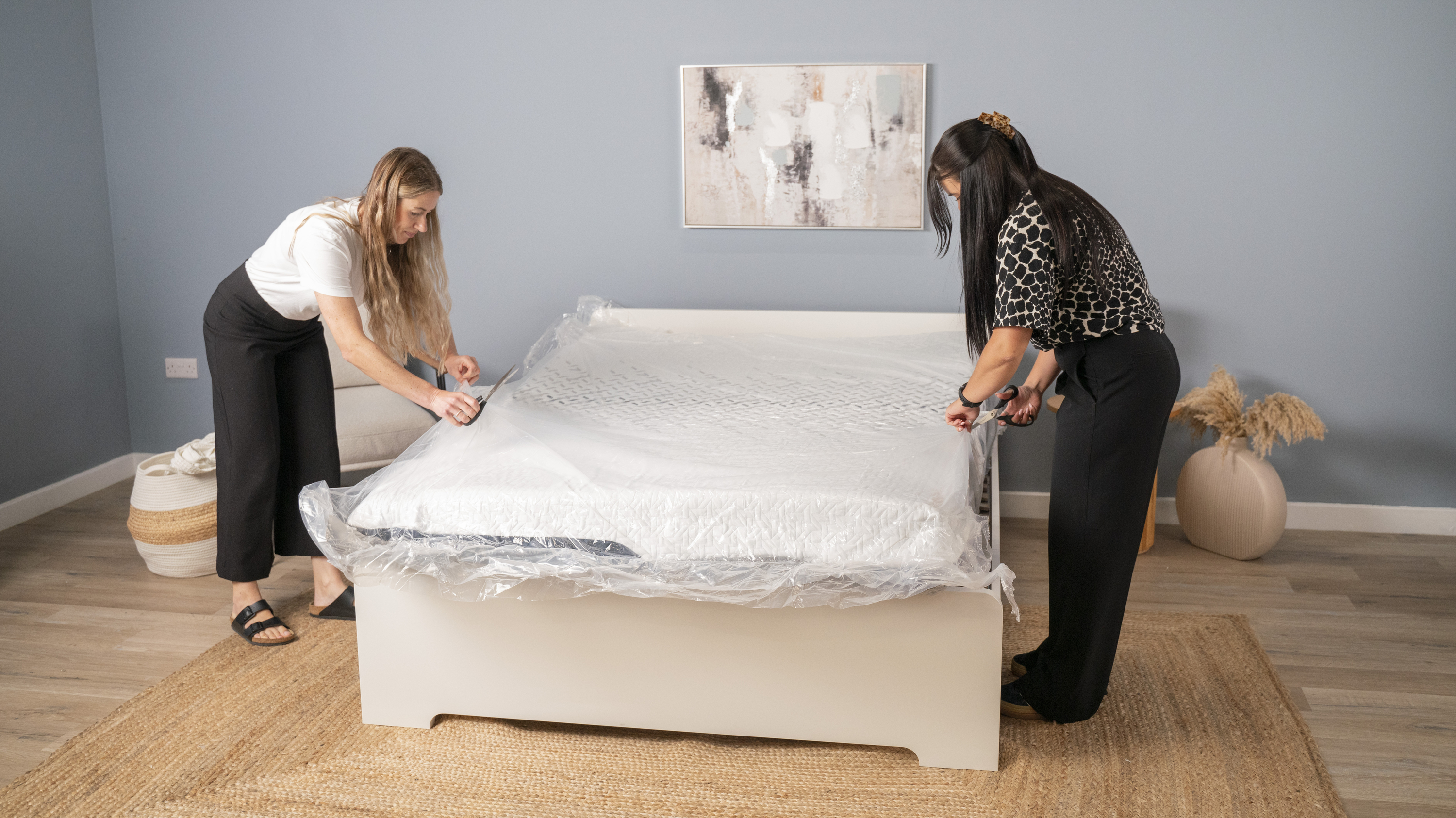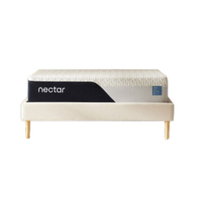9 things to expect after buying a memory foam mattress
From off-gassing to unboxing, here's what to expect from a memory foam mattress

You’ve set your heart on a memory foam mattress, but what’s it going to be like once it arrives in your home? Memory foam mattresses are incredibly popular for a reason, but if you’ve never had one before you might not know what to expect when you go to sleep on it.
Many of our top picks in this year’s best mattress guide for all sleepers are made with memory foam, with the material providing deep pressure relief and contouring to different sleeping positions.
But if you’re used to sleeping on a bouncy innerspring or hybrid mattress, you're going to encounter some differences when you switch to an all-foam bed. In this guide we'll look at what to expect if you buy a memory foam mattress in the upcoming Presidents' Day mattress sales, including unboxing, expansion, comfort and care tips. Let’s get started…
What is a memory foam mattress?
A memory foam mattress is one that’s made entirely from memory foam and other types of foam. These mattresses don’t include any springs or coils, but use a combination of high-density foams and memory foam to provide support and comfort.
The best memory foam mattresses use plenty of memory foam to provide contouring around the pressure points (that's where your body presses into the bed.) These softer foams should be combined with firmer base foams, to provide support across the body. Memory foam mattresses are known for their motion isolation, as the dense foams trap movement so tossing and turning doesn't travel. However, they can also hold onto heat, which is why good memory foam mattresses will add some cooling materials.
You will also see memory foam used in many of the best hybrid mattresses, typically as upper comfort layers. But in this guide, we're concentrating on all-foam memory foam mattresses.
What to expect after buying a memory foam mattress
1. Unboxing a memory foam mattress can be tricky
Buying a mattress in a box can save a lot of money, as well as making it easier for brands to transport and deliver these beds. However, even the best mattresses in a box can be a little tricky to unbox if you don’t know what you’re doing.
Sign up to get the BEST of Tom's Guide direct to your inbox.
Get instant access to breaking news, the hottest reviews, great deals and helpful tips.
First things first — if the mattress brand offers delivery to your bedroom, snap it up. When boxed a mattress is smaller, but no less heavy. If the bed is delivered to your door, we recommend asking another person to help you get the mattress to your room.

Position the mattress on your bed frame and carefully cut open the plastic wrappings. There are usually several layers, with some brands providing a cutter (although scissors will work just as well.) Be warned, once you release the mattress from its vacuum packing, it will start to expand quickly.
2. You’ll need to let the mattress expand
Mattresses in a box have been compressed with specialist machinery, before being wrapped in heavy duty plastic. This means that when you release them from their plastic, they will initially start to expand fairly quickly. But it does take a certain amount of time for a mattress to expand fully before it can be slept on.
Why is this? You essentially need to allow time for air to get back into each foam layer of the mattress, helping to fully expand the bed and return it to its original mattress shape.

Sleep on a mattress before it’s fully expanded and you run the risk of damaging the layers, preventing them from fully expanding. Mattress expansion times vary between different manufacturers. Nectar mattresses, for example, can be slept on after a few hours but take 72 hours to fully expand. We’d recommend leaving foam mattresses for around 4-6 hours before sleeping on them.
However, not all memory foam mattresses come in a box. Some brands, such as Saatva, prefer the traditional mattress delivery method. So, if you're chosen the Saatva Contour5 mattress, for example, it will be delivered flat to your home and can be slept on straight away.
3. You’ll need to open a window
Foam beds in particular can be prone to off-gassing, a side effect of wrapped products such as mattresses in a box. Off-gassing is the process in which volatile organic compounds (VOCs) are released from a product as it expands from compression. It isn’t inherently dangerous, but care should be taken if you have asthma or have very young children in the house.
The best way to dissipate the gas quickly is to shut the bedroom door and open all the windows up to get the smell out quickly. Many modern mattresses in a box will stop smelling after an hour or two, although some can off-gas for a couple of days.
4. You might need a new bed frame
The vast majority of bed frames should be suitable for a memory foam mattress, but you do want to avoid placing an all-foam mattress on a base with widely spaced slats. This is because the foam could spill through the slats, reducing the level of support and potentially leading to premature sagging.

However, slatted bed bases can be a great choice for memory foam mattresses as long as you choose one with slats placed between two and three inches apart. These bed bases should keep a memory foam mattress supported. Our round up of the best bed frames will give you plenty of ideas if you do need a new base.
5. Your body may need time to adjust
A new mattress is always going to feel different, and that difference can be more pronounced if you’re sleeping on an all-foam mattress for the first time. The contouring ‘hug’ that memory foam provides can take some getting used to.
This ‘sink-in’ feeling provides deep pressure relief and plenty of motion isolation but is obviously very different to the bouncier feel of a hybrid, latex or innerspring mattress. This is why manufacturers provide sleep trials, giving sleepers time to try a mattress out. These generally vary from 100 nights to a whole year, allowing time for your body to adjust.
6. You’ll need to protect it from night one
Although many mattresses come with washable covers, you’d still be advised to invest in one of the best mattress protectors to protect the mattress from any spills and stains. A protector is also considerably easier to remove and wash on a regular basis.

In addition, it’s important to set up a regular schedule to rotate your mattress. Exactly how often you should do this varies from brand to brand but, as a rough guideline, you should rotate your mattress at least every three months. We’d also recommend cleaning your mattress regularly to remove any build-up of dust, dirt and any mites.
7. You might sleep warm
Memory foam mattresses have a reputation for holding onto heat, which can cause you to wake up feeling sweaty and uncomfortable. In comparison, hybrid and innerspring mattresses, with open coils allowing air to circulate, tend to sleep cooler.
If you're used to curling up on your hybrid mattress with piles of comforters and blankets, you might find your first night on a memory foam mattress is unexpectedly warm. Many memory foam mattresses now feature additional cooling technologies, while breathable sheets and covers can aid temperature regulation.
8. Your joints appreciate the cushioning
Pressure often build-ups in the places where your body presses against the bed. This can be a particular issue if you lie on your side, and the best mattresses for side sleepers offer cushioned pressure relief at the knees, shoulders and hips.

With foam all the way down, memory foam mattresses are typically best at providing this pressure relief. If you're used to waking up stiff on a hybrid mattress with little contouring, this is one of the best aspects of a switching to a memory foam mattress.
9. You may need to fill in a warranty form
Mattress warranties vary from brand to brand, but most will cover manufacturing problems such as sagging, seams coming undone, uneven surfaces, flaws in the cover, failure to inflate properly or sizing inconsistencies.
While most warranties are now activated automatically when you purchase a mattress, you may occasionally find that both boxed and traditional mattresses require you to fill out a warranty form and return it to the brand during your sleep trial period. So, it’s really important to check the warranty terms and conditions on the website / in the shop before you buy any mattress.
What to do if you don’t like your new memory foam mattress
The unique feel of memory foam isn’t for everyone, so what happens if you don’t like your new memory foam mattress? Mattress in a box brands tend to offer a few options if you do decide that the mattress isn’t for you:
- Give the mattress a fair trial: Most brands won’t accept returns or exchanges until you’ve slept on a mattress for at least 30 days. And this is because it takes time to get used to a new mattress and to ‘break’ it in. So, before you return your mattress, make sure you’ve given it a fair trial.
- Ask for a free comfort layer: Some brands will offer a free comfort layer if your mattress is too firm or too soft, helping to alter the feel of the mattress and giving you more time to break it in.
- Exchange the mattress: If the brand you’ve purchased from has other mattresses on offer, you could consider exchanging the mattress for another one that’s firmer or softer (according to your requirements). However, this could mean that you won’t be able to return the replacement at all, so do check the policies.
- Return the mattress: If your mattress is within its trial period, you will be able to return it for a full refund, providing it’s in good condition and not damaged
How to return a memory foam mattress in a box
Different manufacturers will have different guidelines here and our feature on how to return a mattress in a box will give you more details. But, as a general rule of thumb, your first step will be to contact customer service and let them know that you don’t like the mattress. You will need to have slept on it for at least 30 days before you can request a return.
Your mattress brand may be able to offer you a comfort layer to try before returning a mattress, or there may be the option to exchange for another style of mattress on the website.

But if you do decide you want to return the mattress for a refund, you’ll need to make sure that it’s not damaged and doesn’t have any stains or marks on it that could void the warranty. This is why a mattress protector is so important. You also need to make sure that the safety tag is intact.
You obviously aren’t expected to try and fit an expanded mattress back into its box but do make sure you have any paperwork that came with the bed available and that it’s stripped and ready to be collected.
3 memory foam mattresses in a box to shop today
1. Nectar Classic Memory Foam Mattress: was from $1,081 $349 at Nectar
Nectar's flagship all-foam mattress is a strong all-rounder that's particularly suited to side sleepers. In our Nectar Classic Memory Foam Mattress review we found it firmer than expected, but the upper foam layers offer immense pressure relief. An evergreen Nectar mattress sale reduces a queen to $649, and you get a 365-night trial plus a lifetime warranty.
2. Tempur-Pedic Tempur Cloud Mattress: from $1,699 at Tempur-Pedic
Tempur Materials are the original memory foam, adapted by materials used by NASA astronauts (yes, really.) The Tempur-Cloud is the brand's flagship mattress and our Tempur-Pedic Tempur-Cloud mattress review team appreciated the marshmallow contouring of this bed. A queen has an MSRP of $1,999, but look out for the 30% off Tempur-Pedic mattress sale, which will net you a massive discount.
3. Siena Memory Foam Mattress: was from $529 $199 at Siena
If you’re on a budget, the Siena Memory Foam Mattress is an excellent value for money choice. It’s surprisingly firm for an all-foam mattress, making it supportive for back and stomach sleepers. We think it’s one of the best cheap mattresses you can buy. Temperature regulation and motion isolation are also excellent, but it does lack some pressure relief. A queen size is now $399 (was $769), and you'll get free shipping and returns, a 180-night trial, and a 10-year warranty.

Jo Plumridge is an experienced mattress reviewer with several years' experience covering all things mattresses and sleep, and who tests memory foam, hybrid and organic mattresses. What Jo doesn't know about a boxed mattress isn't worth knowing, so naturally we tasked her with producing a series of features for Tom's Guide looking at all aspects of mattresses, from how to pick between latex and memory foam (it's a tricky one), to the seven mistakes people make when buying a mattress for the first time. When testing the DreamCloud Luxury Hybrid for Tom's Guide, Jo said: "I loved the back support and pressure relief it offered. Plus, it looks far more expensive than it is." When she isn’t writing about sleep, Jo also writes extensively on interior design, home products and photography.
- Ruth JonesSleep staff Writer



